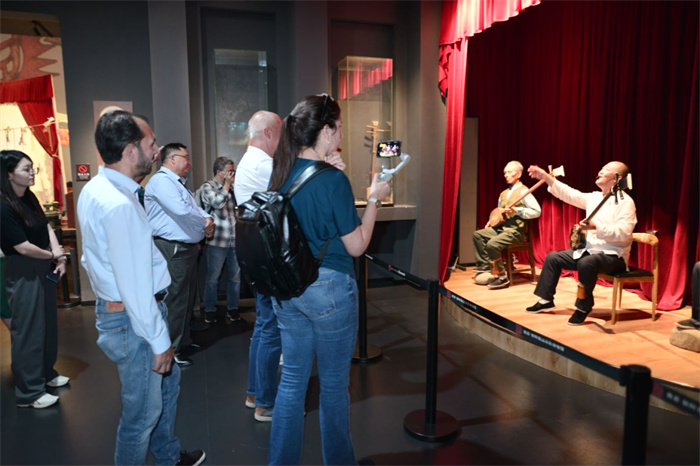
BEIJING, Sept 20 (INP): Delegates from various prominent international media outlets, including one from Pakistan visited Northern Shaanxi Folk Song Museum, enjoying high three-string music instrument.
At times passionate and at other times melodious, the performance captivated the delegates. “Pick up the three strings and set a tone, and all our guests will listen carefully…” A wave of storytelling emanated from the Northern Shaanxi Folk Song Museum.
“In Pakistan, we have a three-stringed instrument known as the sitar. It is a long-necked lute commonly played in the northern regions.
Often performed in tea rooms, it can accompany singing, sometimes alongside drums,” said Naveed Hussain, from a Pakistani media outlet, in an interview with Gwadar Pro.
Knowing that Sanxian, a three-string instrument, is one of the most popular Chinese folk instruments with a history of approximately 2,000 years, Naveed stated that music can transcend borders.
“It’s a wonderful experience to learn about intangible cultural heritage in northwest China and to promote mutual understanding and respect among our diverse civilizations,” Naveed remarked.
While visiting the Intangible Cultural Heritage Exhibition Hall in Yuyang District, Yulin City, Shaanxi Province, the delegates explored 15 different exhibition rooms, including stone carving, clay sculpture, paper cutting, and embroidery.
The paper-cutting artist creates a rabbit figure for Naveed, who was born under the Chinese zodiac sign of the rabbit. [Photo provided by Xinhua].
Learning that Naveed is born under the Chinese zodiac sign of the rabbit, the paper-cutting artist crafted a rabbit figure for him on-site. Naveed carefully placed it in his pocket and mentioned that he would take it home to share this Chinese art with his family in Pakistan.
“This really shows that ancient China was a cradle of civilization,” Naveed marveled at the first sight of the Shimao ruins, located in Shenmu City, Yulin.
These ruins are a Neolithic city built approximately 4,300 years ago. The delegation visited a stone city here with immense fortifications and sophisticated infrastructure.
Over the past decade, excavators have uncovered thousands of artifacts and a 230-foot-high stepped pyramid.
In Naveed’s eyes, they represent a community and society with a pyramidal structure. “Like in Egypt, you have the Egyptian civilization; you have the Mayan civilization in Latin America. Now you have these ruins in the Chinese civilization,” said Naveed.
“The ruins are a successful example of heritage discovery and protection, ensuring that this valuable cultural heritage can be preserved for future generations.
This will have a profound impact on both China and the world. With advanced excavation technologies, I believe China can assist Pakistan in uncovering more,” Naveed told Gwadar Pro.
INP/javed































































































